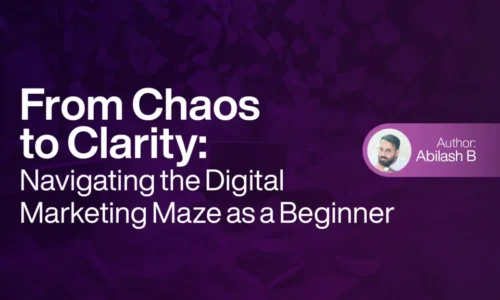Marketing in the Metaverse: How Brands Can Connect with Virtual Audiences
Welcome to the future of marketing. This is not merely a trend; it is an engaging avenue in which companies can interactively sell to customers. With the blending of the virtual with the actual world, knowing how to operate in this new landscape is critical to brands looking to remain current. We will focus on this subject by detailing ways through which businesses can reach out to their clients’ virtual selves and treat them the same way as they would in the real world.
Table of Contents

What is the metaverse?
Welcome to the next generation of marketing! It’s more than just a passing fad; it’s a groundbreaking movement environment in which brands can interact with consumers in active and engaging ways. To remain relevant, brands must grasp how to navigate the merging of digital and physical environments. In this blog post, we will explore effective methods for engaging virtual audiences and creating enduring connections.
Why brands should embrace the Metaverse
Broadening Reach: The metaverse allows brands to connect with numerous users seeking fresh experiences.
Ways to Engage: The Metaverse offers interactive and immersive marketing approaches that create stronger bonds with consumers compared to conventional advertising.
Innovative Storytelling: brands can create distinct stories that connect with viewers, enhancing the impact of marketing efforts.
Key Strategies for Marketing in the Metaverse
Build immersive experiences: Design virtual shops or interactive product introductions to captivate users in three-dimensional environments.
Utilize Virtual Reality: Use VR to immerse users in distinctive settings for a first-hand product experience.
Utilize gaming platforms: Incorporate advertisements into well-known games such as Fortnite or Roblox to organically reach tech-savvy audiences.
Work together with virtual influencers: Collaborate with avatars or digital personas that connect with your target audience to improve brand authenticity.
Understanding Virtual Audiences
Virtual audiences encompass a range of individuals, such as gamers, social influencers, and casual users. They are looking for:
Authenticity: It is important because brands that are truthful and open establish trust.
Creativity: It is more effective when it generates joy or curiosity in the audience.
Community: People appreciate environments where they can interact and exchange experiences with one another.
Having a grasp on these desires can assist brands in customizing their strategy for optimal effectiveness.
Creative Strategies for Engagement
Online Events
Organizing events in the metaverse has the potential to draw in a substantial number of participants. Brands have the ability to host product releases, music shows, or art shows. An instance could be a fashion brand organizing an online fashion show where users can engage and buy products instantly.
Engaging Interactions
Develop activities that inspire engagement. An example would be to incorporate game elements into your brand’s communication, such as creating tasks or missions for users to accomplish in exchange for incentives. This not only provides entertainment but also strengthens customer allegiance.
Collaborating with Influencers
Collaborate with well-known virtual influencers who connect well with your target audience. These partnerships can increase your brand’s exposure and enhance its reputation. Influencers can host live streams, endorse products, or generate personalized content inside the metaverse.

Building Community
Building a strong community is essential in the metaverse. Here is the method:
Encourage Engagement: Create areas for conversations, input, and socializing. This might be a place for discussions, online coffee chats, or a specialized Discord channel.
Arrange Recurring Events: Schedule regular gatherings such as weekly activities, game nights, or Q&A sessions to maintain engagement and foster connections within your community.
Measuring Success
To assess your Metaverse marketing efforts, focus on:
Metrics for engagement: Monitor event attendance, participation rates in challenges, and mentions on social media.
Collect feedback and surveys: To enhance upcoming campaigns based on user opinions.
Monitor the number of users who become customers after engaging to track sales conversions.
Challenges and Considerations
Even though the metaverse provides exciting possibilities, it also brings about challenges.
Technical barriers: It can restrict the reach of some consumers, as not all have the required technology, such as VR headsets.
Adhering to Regulations: Make sure to follow data privacy laws and platform-specific guidelines.
Staying current with trends is essential as the metaverse continues to develop quickly. Brands must stay current with trends and consumer behavior.
Conclusion
The metaverse is not just a concept for the future; it is a reality today. It is present-day existence that presents amazing possibilities for brands. By comprehending virtual audiences and utilizing imaginative engagement tactics, brands can create significant connections and cultivate loyalty in this ever-changing digital environment. The brands that lead the way in redefining customer
Engagement will be those who innovate and adapt as we enter this new frontier.



